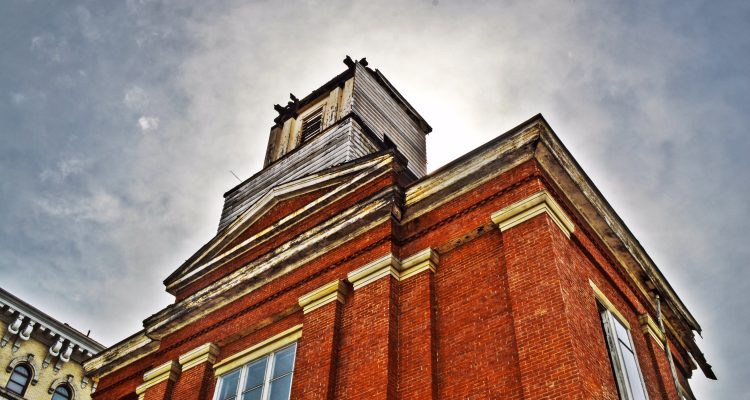Its bell rang moments after West Virginia became the 35th state.
And now the very rare George Coffin bell has been removed by employees of Edge Co. after a huge portion of the former Second Presbyterian Church collapsed on Feb. 29, when rain and high winds struck the Wheeling area. The demolition, Wheeling Fire Chief Larry Helms confirmed, began Tuesday on the corner of 20th and Market streets and is expected to be completed by the end of the week.
The 166-year-old building experienced a partial roof collapse in September 2011, but the damage was repaired by the owners, Richard Pollack and Robert and Libby Strong, and a historic preservation grant covered a portion of the expense. A large group gathered this past weekend to salvage what they could preserve from the church, including several stained glass windows located in still stable areas of the historic building.
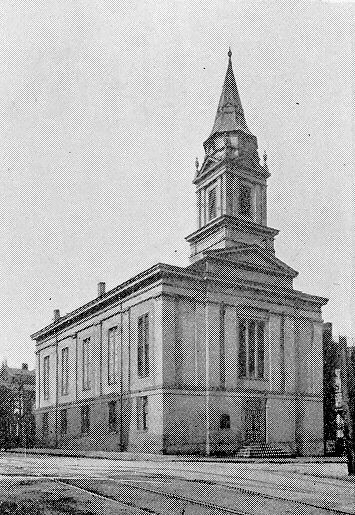
“It’s my understanding that they were able to get a few things removed from the church before the demolition crews started this morning,” Helms said. “And I watched them remove the bell from the church yesterday.
“I watched something pretty amazing during the demolition, and that was one of the Edge Co. workers actually saved one of the stained glass windows in the middle of taking down one of the walls. I couldn’t believe he was able to do what he did with that crane,” he continued. “It’s never easy to make these decisions because of the history involved, but when a building is in the shape this one was after the collapse, they have to come down for the public’s safety. I’d never order a building to be brought down just for the sake of taking down a building. Never.”
The owners said they hope the Coffin bell will be moved to the Smart Center in Centre Market.
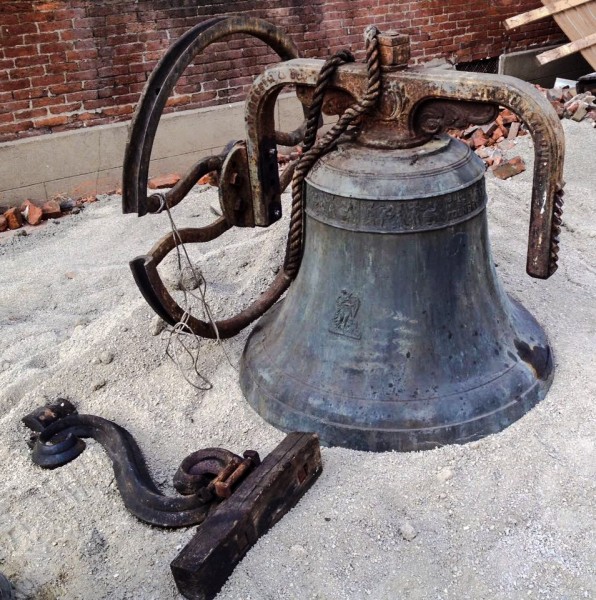
“When we inspected it after the collapse, I saw a lot of water damage to the mortar joints and to much of the rest of the building,” Helms said. “The owners have been very understanding through all of this, and it’s really a shame it had to come to this because of how hard they had been working on it since acquiring it.
“We expect the demolition to be completed by the end of (Wednesday) because the demolition foreman told us that he expects it to go pretty quickly once they get started,” the fire chief continued. “Once it did begin, I could tell that it was in worse condition than I thought it was.”
Helms said that while the city of Wheeling has a strong population of citizens who are interested in preserving the oldest buildings in the municipality, the weather is a constant enemy.
“It stinks when you have to watch a building like this church come down because of the history, the architecture, and because of what it means to so many people,” he said. “But it’s the weather in this region of the country. The rain, the freezing temperatures, the snow, those elements all work against our buildings, and that’s exactly what has caused this demolition.”
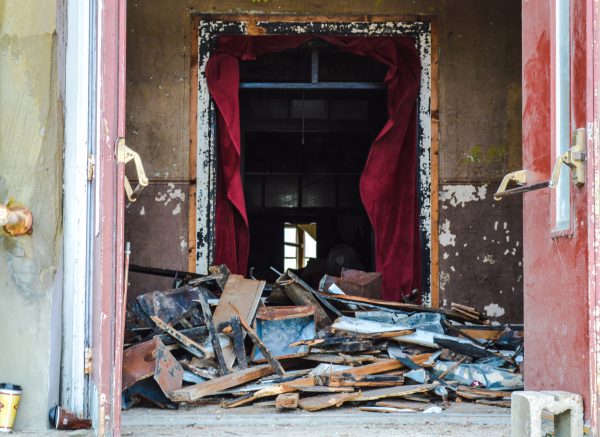
Jeanne Finstein, interim director of the Wheeling National Heritage Area Corp., was sad to see the demolition take place.
“When they are gone, they are gone for good, and that’s always a shame when we watch a building with this much history have to go away,” she said. “The owners of it really worked very hard to preserve it, but it’s also a building that wasn’t taken care of very well before they acquired it.
“Through the building’s history there were several changes that were made by previous owners, and that could have played a part in all of this,” she continued. “But it’s not inevitable that a building this old has to be demolished someday. If they are taken care of, made to be water tight, then they will be protected from the elements.”
Finstein completed research on the Second Presbyterian Church and her work appears below.
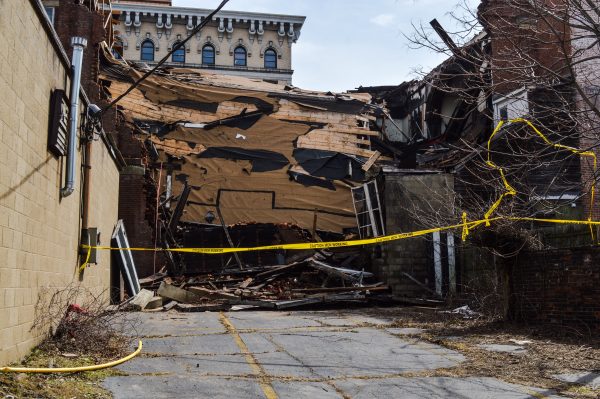
By Jeanne Finstein
Prior to the Civil War, in 1847, under the able ministry of Rev. Henry R. Weed, sixteen members from the First Presbyterian congregation formed the Second Presbyterian Church in Centre Wheeling. They purchased the property of William Chapline at Market and 20th Streets, and the Greek Revival-style, brick church – originally stucco-covered – was completed in early 1850, just months after the Wheeling Suspension Bridge was finished. According to legend, the church was built, at least in part, with slave labor. During construction of the spire, ropes and tackling failed, causing the spire to fall to the street below and fatally injuring a man who had just come by looking for work.
The names of the first elders, Samuel Ott and William B. Quarrier, appear on a memorial window in the church, along with that of another early elder, Alexander Hadden. Ott (1793-1868) was one of the pioneer merchants of Wheeling, operating a successful hardware business. Navy veteran William B. Quarrier (1800-1862) was a banker and the son of a Scottish immigrant who was a colonel in the American army during the Revolutionary War.
Alexander Hadden, the third elder who was memorialized in Second Presbyterian windows, was also a successful businessman. Sadly, his 25-year-old son Richard didn’t heed the temperance efforts of the church. Richard and a friend, James McLane, got into a fight in March 1862, with McLane fatally shooting Hadden and then remorsefully committing suicide. According to published reports of the incident, “this terrible affair was the result of drinking” by both men.
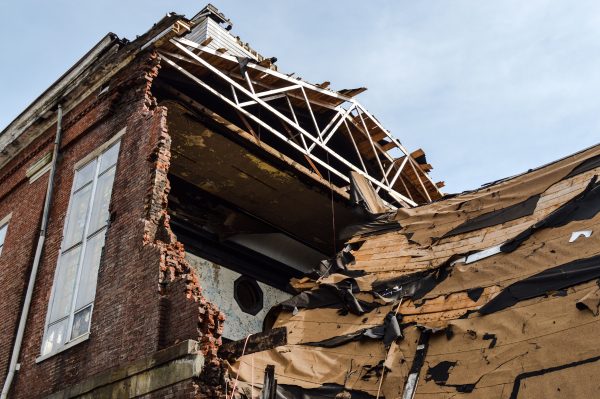
Early Trustees of Second Presbyterian included brothers Jacob and Thomas Hornbrook. Jacob Hornbrook was later a delegate to the First Wheeling Convention in 1861, which ultimately led to the formation of the state of West Virginia. During the Civil war he came to be known as the “soldiers’ friend,” regularly traveling to places where Wheeling troops were stationed, taking care packages and bringing back their pay to ensure support for their families at home. Thomas Hornbrook was the Surveyor of Customs at the Port of Wheeling at the time the Civil War began. His office was in the Custom House, now known as West Virginia Independence Hall. At the beginning of the war, he refused to turn property over to the Governor of Virginia and allowed the Union to store guns and gunpowder in the basement of the building. His summer home is now Wheeling Park.
Princeton-educated Rev. Cyrus Dickson, D.D. (1816-1881) accepted the call to become the first pastor of the Second Presbyterian Church, and a Board of Trustees and a Building Committee went to work. Redick McKee was the superintendent of the Sabbath School beginning in 1848.
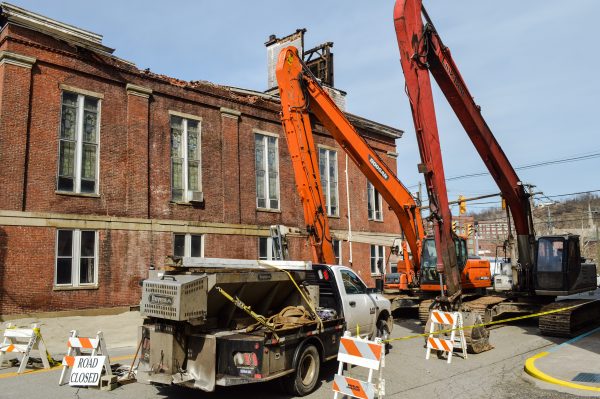
Margaret Dickson, daughter of the first pastor, recorded her recollections of the building at the time. “The large audience room was lighted by lard oil lamps, and the great chandelier in the centre and the two tall candelabra on either side of the pulpit, made by the famous firm of Cornelius in Philadelphia, were objects of great admiration.”i The Elders used two brass collection boxes attached to long wooden handles, carrying them down the middle and up the side aisles and passing into each pew to receive the offerings. The offerings were usually of coin, as in those days no bank notes of less value than five dollars [approximately $135 in today’s money] were allowed in Virginia. At the time, parishioners rented pew space. An interesting side note: in December 1851, the trustees voted to purchase a coat, “worth not more than $10,” for the church sexton, George Gaunt. It seemed that Gaunt had to come to Centre Wheeling from Bridgeport, Ohio, to perform his duties because no free African Americans were allowed to live in Virginia at that time.
Rev. Dickson served from the founding of the church until 1857, when he was replaced by Rev. Richard Varick Dodge (1821- 1885). Yale- and Princeton-educated Rev. Dodge had previously been a minister in Springfield, Illinois, and from that time, he and his wife were personal friends of Abraham and Mary Todd Lincoln. During an illness while in Wheeling, Mrs. Dodge received get-well wishes from President Lincoln and is said to have also received a gift of a shawl from Mrs. Lincoln. Dodge himself was active in West Virginia statehood conventions during the Civil War, leading invocations and the singing of the Star Spangled Banner. Also of note during Reverend Dodge’s tenure, the Wheeling YMCA was organized in the pastor’s study in 1859, although its building, located across Market Street from the church, wasn’t constructed until 1910. Later in his career, Rev. Dodge was Principal of Linsly Institute.[i]
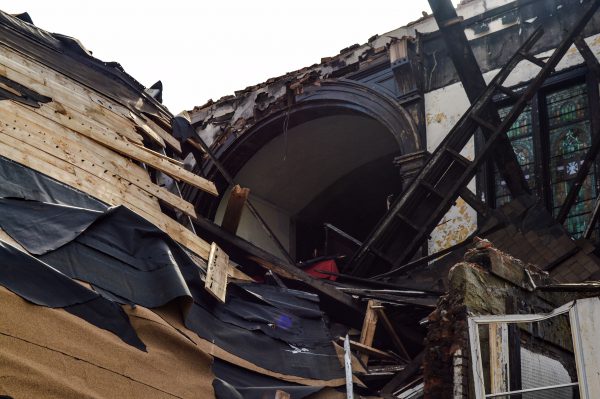
The Civil War years must have been an interesting time for the church. One of the early members, active on the “subscription” committee, was John Goshorn, a slave owner and ardent secessionist. Among the slaves owned by Goshorn was Lucy Bagby. When Lucy escaped and fled to Cleveland in early 1861, Goshorn and his son William traveled there and testified in a court case demanding the return of their property. The Goshorns won the case and brought Lucy back to Wheeling. It is believed that she was the last slave brought back to the “south” under the Fugitive Slave Law. Apparently John Goshorn ignored temperance efforts by the church – his death certificate shows his cause of death as alcoholism.
Rev. Dodge was followed by Rev. John Moffat (1816-1875). Born in Scotland, Moffat was orphaned at a young age. He first found work as a shepherd and then in the mercantile business before immigrating to America in 1835, arriving with no funds “except for a sovereign that had been loaned him by a fellow passenger.”[ii] He began preaching in 1840 at age 34 and served in several Ohio Presbyterian churches, including ones in St. Clairsville and Bellaire, before coming to Second Presbyterian in 1863. After serving for eight years at Second Presbyterian, health issues resulted in only part time work by John Moffat, with his son, James Moffat (1840-1916) serving as co-pastor. James Moffat eventually succeeded his father at Second Presbyterian and ministered there until 1881, when he left to become president of Washington and Jefferson College, in Washington, Pa.
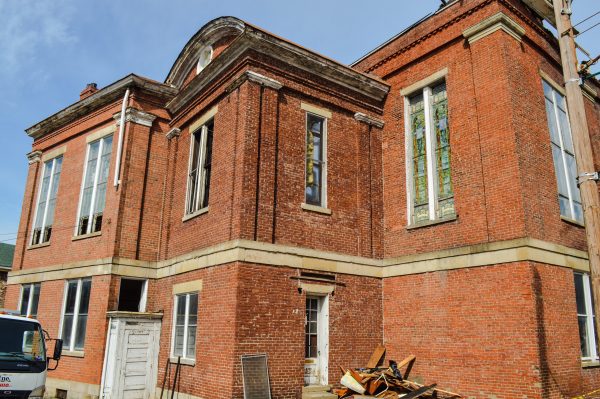
Church and Sabbath School membership grew over the next few decades. Records indicate that the Sunday School enrollment at the time of the church’s semi-centennial in 1898 was 230. Nearly 200 new church members were added on Easter Sunday, 1912, alone – not long after Billy Sunday’s evangelical visit to Wheeling. Church-sponsored activities included the local Anti-Saloon League, a Men’s Club, a Women’s Association, Young Couples’ Class, Young Ladies Sewing Society, Kings Daughters, and shared support of a medical missionary in China, along with lawn fetes and church suppers.
By 1970, the church tower and exterior stucco covering had been removed, and the congregation had dwindled down to about a dozen members. Although the church was still financially stable, the remaining members decided to sell the church building to the Wheeling Christian Church. That church sold the property in the fall of 2008 to the current owners, the Near Earth Observation Foundation. The goal of the current owners is to use the building as an urban observatory and an educational facility for teacher professional development, presentations, plays, and similar activities.
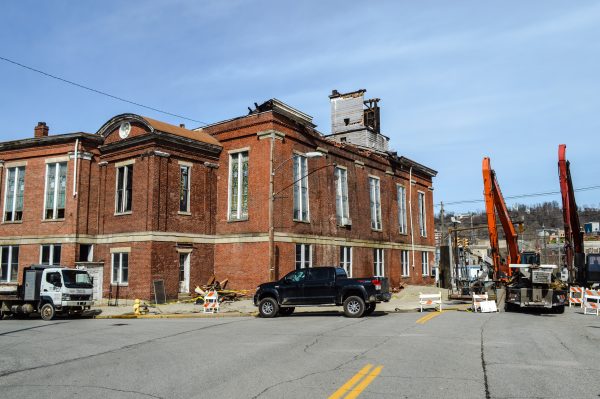
A disastrous roof collapse occurred on September 22, 2011. Subsequent inspection found that three of the main roof trusses had been modified when the sanctuary ceiling was raised to accommodate a new chandelier. Those cuts may have contributed to the roof collapse, although excess roofing material is believed to have been the primary cause. The current owners are in the process of repairing the building.
One of the notable features of the church is the original George W. Coffin bell from 1850. [That company also made bells for Union ironclad ships during the Civil War.] It is believed to be one of the few remaining bells that were rung on June 20, 1863, when West Virginia officially became a state. It was rung again on June 20, 2013, in celebration of the state’s sesquicentennial.
[i] Obituary Records of Graduates of Yale College, 1885. http://mssa.library.yale.edu/obituary_record/1859_1924/1884-85.pdf
[ii] Moffat, Charles and Norma. Family Histories of Moffat, McNeelan, Crangle, Pierson, Angel, Lichtenwalter. 1990.
(Photos by Steve Novotney)


